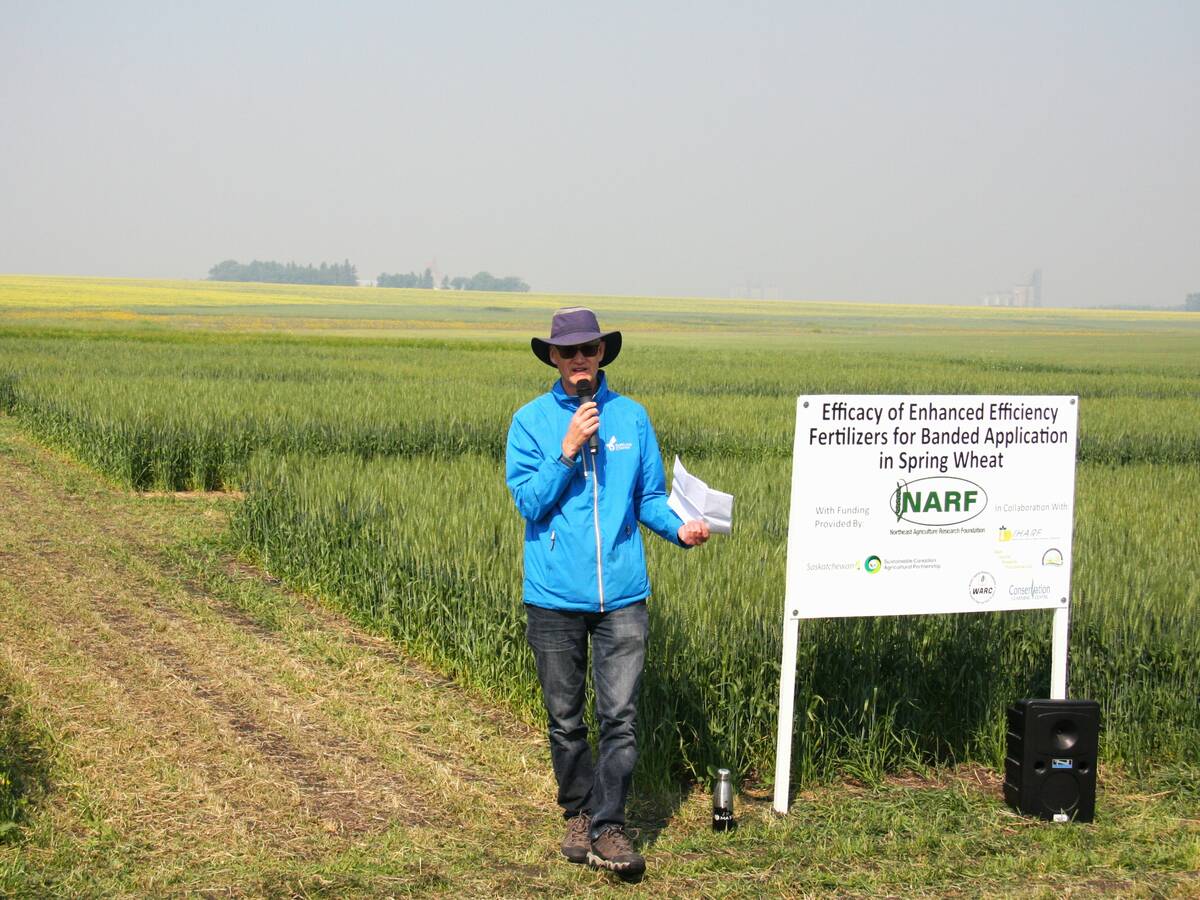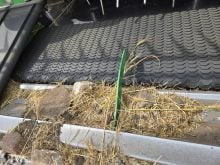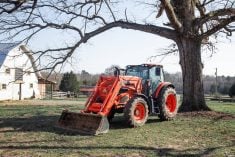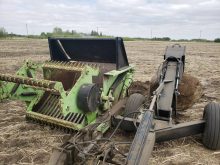Some producers who use yellowfeed as livestock forage are finding it a bit challenging to harvest this fall.
Humidity is keeping crops from drying down, said regional forage specialist Lorne Klein of Weyburn, Sask.
Yellowfeed is the practice of applying glyphosate to an annual cereal crop at the milk-dough stage and leaving it standing to dry. Once dry, it is cut and baled, usually the same day.
Klein said some crops aren’t drying this year even after spraying, standing and finally cutting it to help it along.
Read Also

Fertilizer method’s link to emissions studied
A researcher says others studying greenhouse gas emissions aren’t considering how the loss of nitrogen into the atmosphere correlates with fertilizer application or if there is an impact to yield.
“It turns yellow but it doesn’t dry,” he explained.
The main benefits of yellowfeed are in leaving the crop standing and completing the harvest more quickly.
“You’re not taking the risk of laying it in a windrow for an extended period of time,” he said.
“On a field with a perennial weed control problem, you get an extra bang for your buck. You can schedule your harvest a little bit more so than with a haybine and get everything done in a day.”
Using a swather is easier and quicker than a haybine. Fuel costs are lower and it offsets the cost of the glyph-osate.
Aside from humidity, heavy crops can be a problem because they are too thick to dry even after swathing.
Klein recommends using a higher rate of glyphosate in poor drying conditions, 1.25 or 1.5 litres per acre instead of one.
“If you have to cut it, try to use a 20-foot swather to give it some room to dry,” he said.
A haybine might be an option, but it will take longer.
“If you cut ahead of when it is dry enough to bale it, you have to think about how big a window you have.”
Not common
Although the practice of yellowfeed has been around a while, Klein estimates that fewer than five percent of Saskatchewan producers actually use it.
A yellowfeed trial from 2001 to 2003 examined the practice and how it affected forage quality. Klein and his colleagues found there was no effect on quality or yield.
Yield actually increases after spraying, while protein quality declines due to crop maturity.
The study also found that barley dries between four and seven days sooner than oats.
There was initial excitement about the practice after the study was done, but then it dropped off and just this summer Klein began receiving phone calls about it again.
Near Fillmore, Sask., Les Johnston said he likes yellowfeed because it can be sprayed and left until he has time to get to it.
“You can stop the progression of the crop at any stage,” he said. “There is no loss of nutrients.”
Johnston said it also allows him to manage white mould, which can cause abortions in cattle.
Klein said the trial found that cattle preferred yellowfeed to greenfeed.
“Three out of four producers would say their cows like it better,” he said. “One out of four said it was equal.”
There is no apparent reason why they prefer it, but Klein said producers have anecdotally noticed that if they spray a field of quack grass with glyphosate, for example, the cattle head straight for it.
Klein added that heavy crops of barley varieties that are prone to lodging could do so, particularly under high fertility conditions.
Producers should be sure to take that into consideration.
Oats will lie over at a height of about 30 centimetres but a swather can still get under it, he said.

















